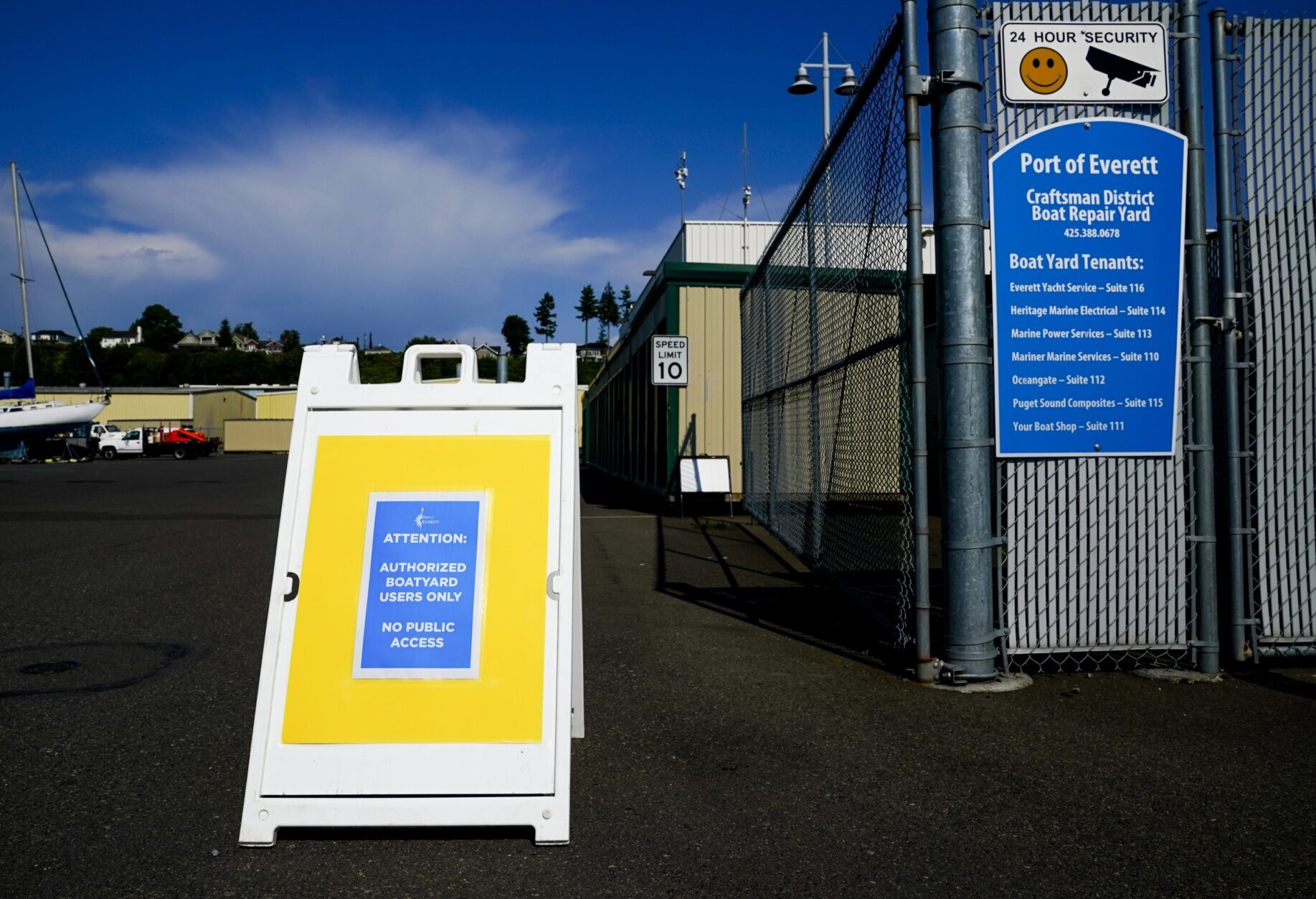
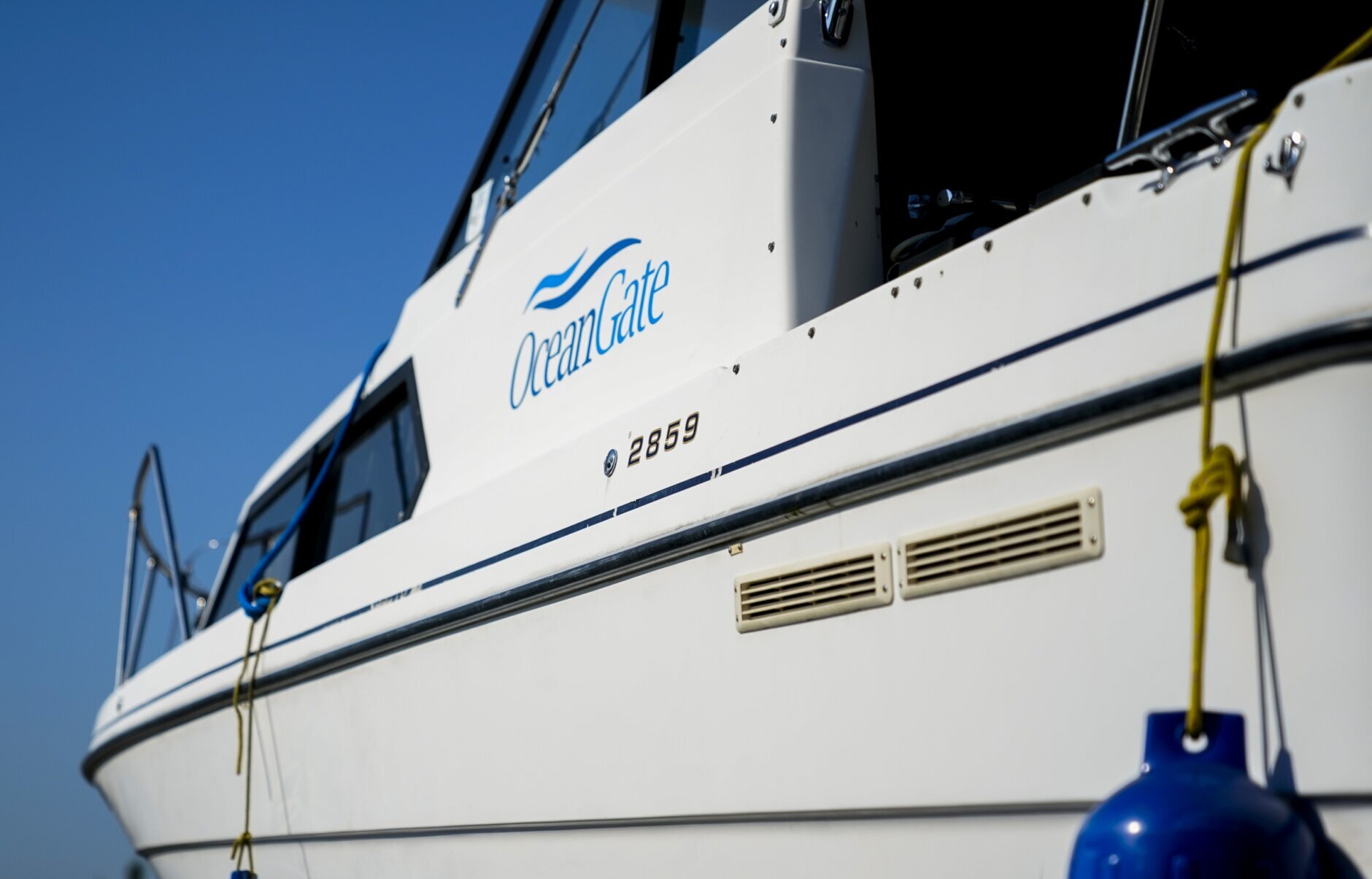
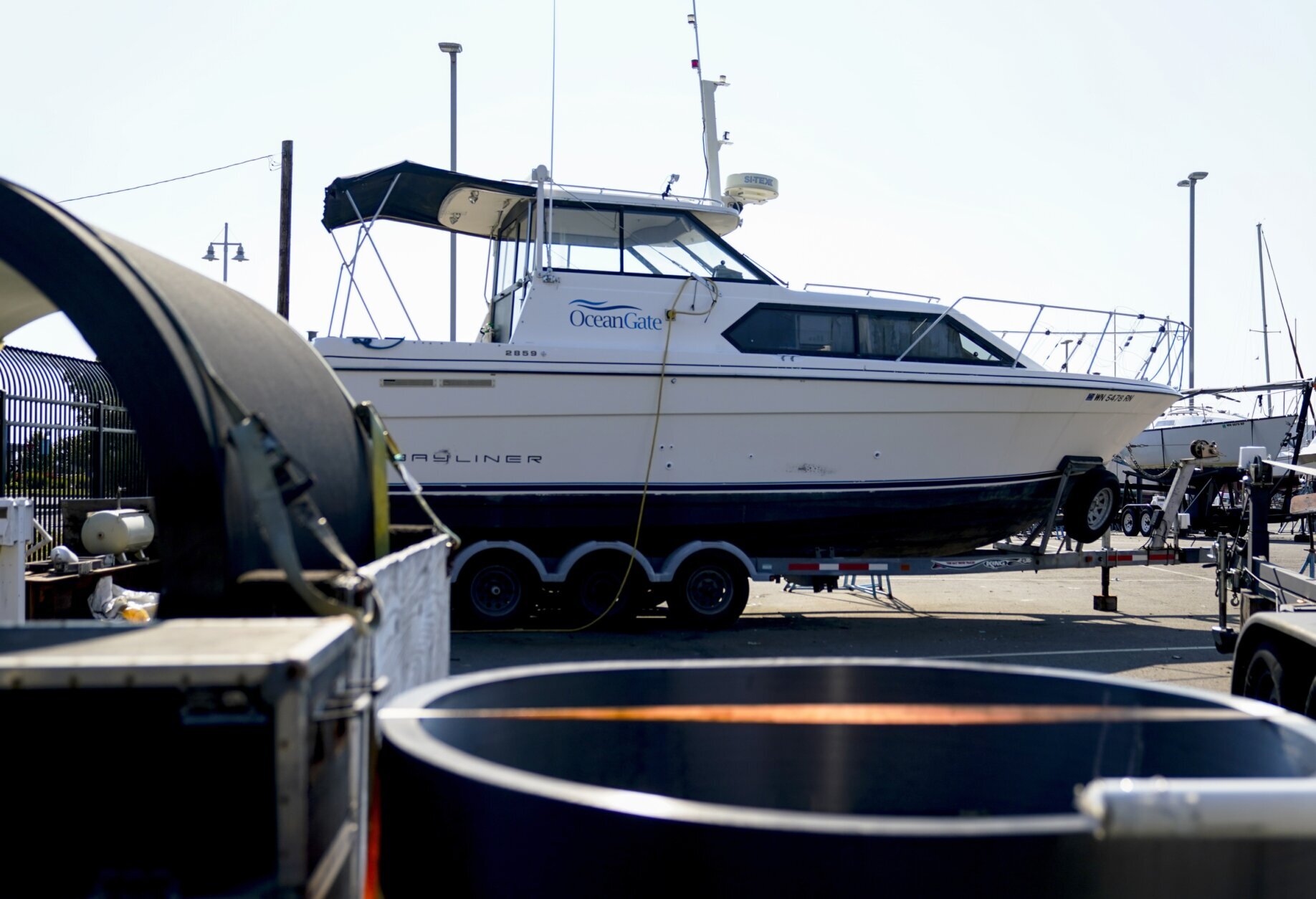
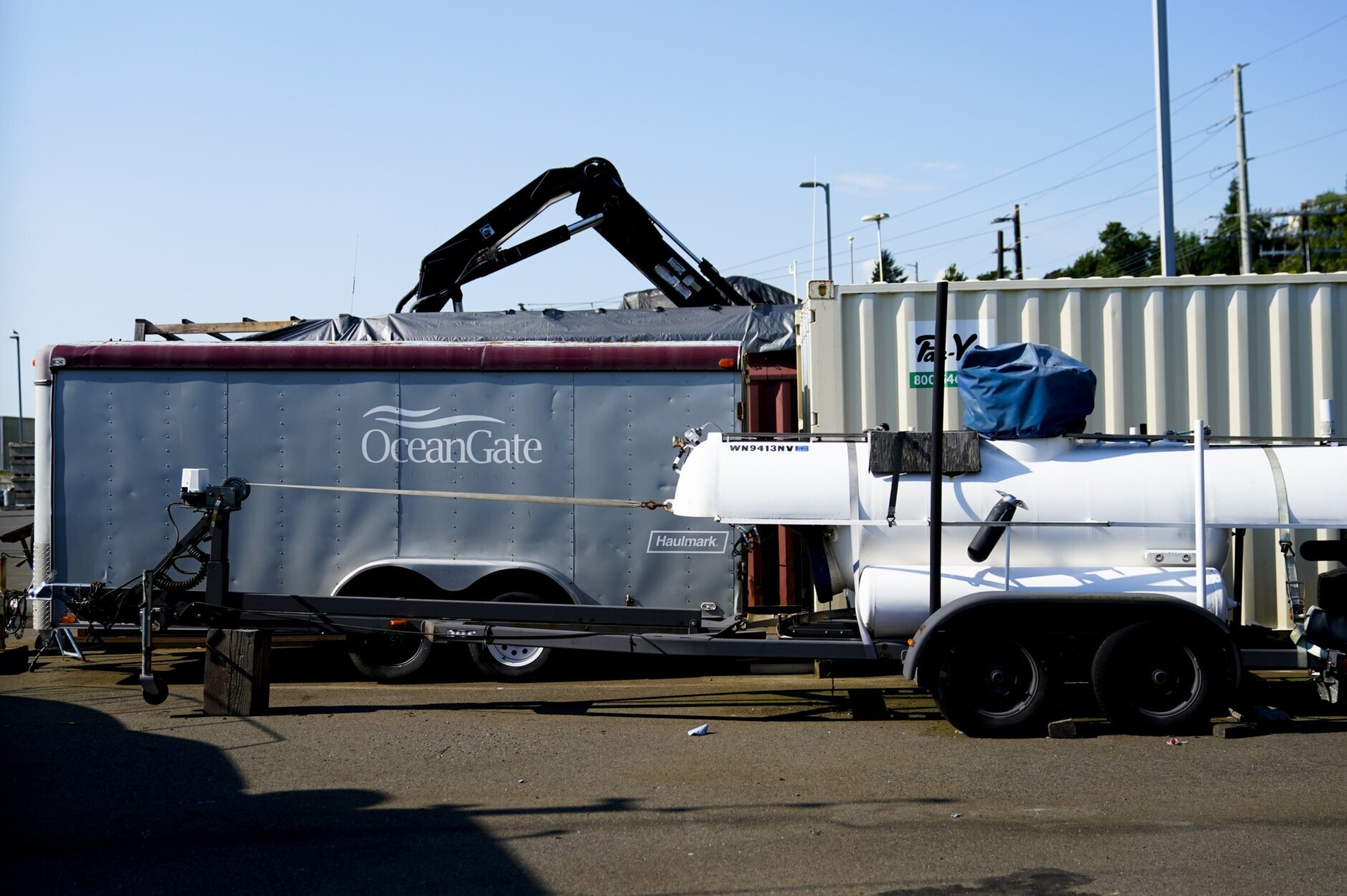
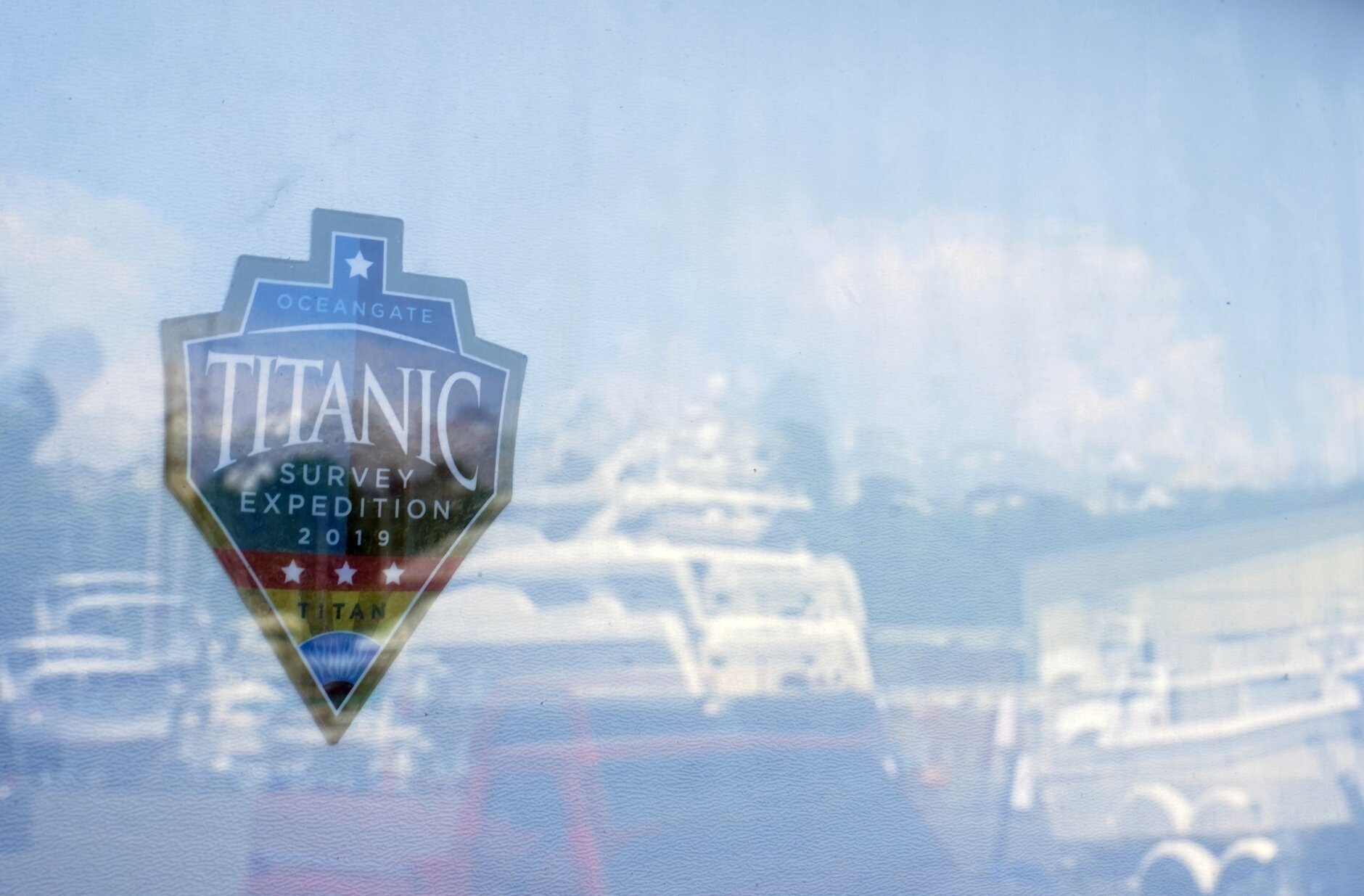
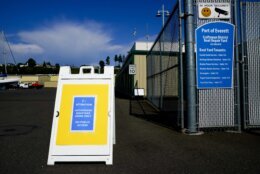
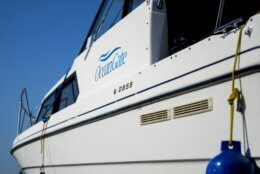
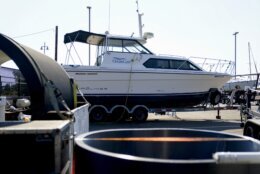

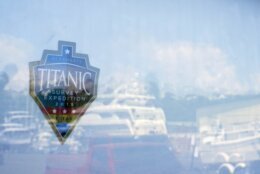
A day after revelations that the Titan submersible imploded, officials searched the ocean floor for evidence and grappled Friday with vexing questions about who is responsible for investigating the international disaster.
A formal inquiry has not yet been launched because maritime agencies are still busy searching the area where the vessel was destroyed, the U.S. Coast Guard said Friday. Debris was located about 12,500 feet (3,810 meters) underwater near the Titanic wreckage it was on its way to explore. The U.S. Coast Guard led the initial search and rescue mission.
“I know there are also a lot of questions about how, why and when did this happen. Those are questions we will collect as much information as we can about now,” Rear Adm. John Mauger of the First Coast Guard District said Thursday.
It was not entirely clear Friday who would have the authority to lead what is sure to be a complex investigation involving several countries. OceanGate Expeditions, the company that owned and operated the Titan, is based in the U.S., but the submersible was registered in the Bahamas. OceanGate is based in Everett, Washington, but closed when the Titan was found. Meanwhile, the Titan’s mother ship, the Polar Prince, is from Canada, and the people on board the submersible were from England, Pakistan, France, and the U.S.
The National Transportation Safety Board said the U.S. Coast Guard has declared the loss of the Titan to be a “major marine casualty” and the Coast Guard will lead the investigation. NTSB spokesperson Peter Knudson said that information was provided to the agency’s senior management by Coast Guard officials, and the NTSB has joined the investigation.
The Coast Guard has not confirmed that it will lead the investigation. Coast Guard headquarters said the Coast Guard First District in Boston will discuss future operations and plans, but did not say when. The First District did not respond to phone and email messages seeking comment.
Meanwhile, the Transportation Safety Board of Canada said it was launching an investigation into the Polar Prince, the Titan’s mother ship and support vessel. Seventeen crew members and 24 others were on board the ship during the Titan’s journey.
How the overall investigation of the tragedy will proceed is complicated by the fact that the world of deep-sea exploration is not well-regulated. Such expeditions are scrutinized less than the companies that launch people into space, noted Salvatore Mercogliano, a history professor at Campbell University in North Carolina who focuses on maritime history and policy.
The Titan was not registered as a U.S. vessel or with international agencies that regulate safety. And it wasn’t classified by a maritime industry group that sets standards on matters such as hull construction.
OceanGate CEO Stockton Rush, who was piloting the Titan when it imploded, complained in the past that regulations can stifle progress.
“Bringing an outside entity up to speed on every innovation before it is put into real-world testing is anathema to rapid innovation,” Rush wrote in a blog post on his company’s website.
Bob Ballard, a member of the research team that found the Titanic wreck in 1985, called the lack of certification by outside experts “the smoking gun” in the implosion.
“We’ve made thousands and thousands and thousands of dives … to these depths and have never had an incident,” Ballard said on ABC’s “Good Morning America.”
“The smoking gun is that this is the first time by a submarine that wasn’t classed,” he said.
One question that seems resolved is when the implosion likely happened. After the Titan was reported missing Sunday, the Navy analyzed acoustic data and found an “anomaly” consistent with an implosion or explosion in area where the vessel was when communications were lost, according to a senior U.S. Navy official.
The Navy passed on the information to the Coast Guard, which continued its search because the data was not considered definitive, according to the official, who spoke on condition of anonymity to discuss a sensitive acoustic detection system.
Condolences and tributes to those who died flowed in from around the world. Killed in the implosion were Rush; two members of a prominent Pakistani family, Shahzada Dawood and his son Suleman Dawood; British adventurer Hamish Harding; and Titanic expert Paul-Henri Nargeolet.
The Titan launched at 8 a.m. Sunday, and was reported overdue that afternoon about 435 miles (700 kilometers) south of St. John’s, Newfoundland. Rescuers rushed ships, planes and other equipment to the area.
Any sliver of hope that remained for finding the crew alive was wiped away early Thursday, when the submersible’s 96-hour supply of air was expected to run out and the Coast Guard announced that debris had been found roughly 1,600 feet (488 meters) from the Titanic.
A flurry of lawsuits is expected, but filing them will be complex and it’s unclear how successful they will be. Plaintiffs will run into the problem of establishing jurisdiction, which could be tricky, just as it will be for the investigation, said Steve Flynn, a retired Coast Guard officer and director of Northeastern University’s Global Resilience Institute.
The implosion happened “basically in a regulatory no man’s land,” Flynn said.
“There was essentially no oversight,” Flynn said. “To some extent, they leveraged the murkiness of jurisdiction to not have oversight.”
James Cameron, who directed the blockbuster movie “Titanic” and has made multiple dives to the iconic ship’s wreckage, told the BBC that he knew an “extreme catastrophic event” had happened as soon as he heard the submersible had lost navigation and communications at the same time.
“For me, there was no doubt,” Cameron said. “There was no search. When they finally got an ROV (remotely operated vehicle) down there that could make the depth, they found it within hours. Probably within minutes.”
There’s no other comparable ocean search, especially with so many countries and even commercial enterprises being involved, said Norman Polmar, a naval historian, analyst and author based in Virginia.
The cost will easily stretch into the millions of dollars for the U.S. Coast Guard alone. The Canadian coast guard, U.S. Navy and other agencies and private entities also provided resources and expertise.
Some can seek reimbursements. But the U.S. Coast Guard is generally prohibited by federal law from collecting reimbursement pertaining to any search or rescue service, said Stephen Koerting, a U.S. attorney in Maine who specializes in maritime law.
At least 46 people successfully traveled on OceanGate’s submersible to the Titanic in 2021 and 2022, according to letters the company filed with a U.S. District Court in Norfolk, Virginia, that oversees matters involving the shipwreck site.
But safety concerns have been raised by by both an ex-employee and some former passengers.
___
Associated Press writers Lolita C. Baldor in Washington; Ben Finley in Norfolk, Virginia; Holly Ramer in Concord, New Hampshire; David Sharp, in Portland, Maine; and Gene Johnson in Seattle contributed to this report.
Copyright © 2024 The Associated Press. All rights reserved. This material may not be published, broadcast, written or redistributed.







